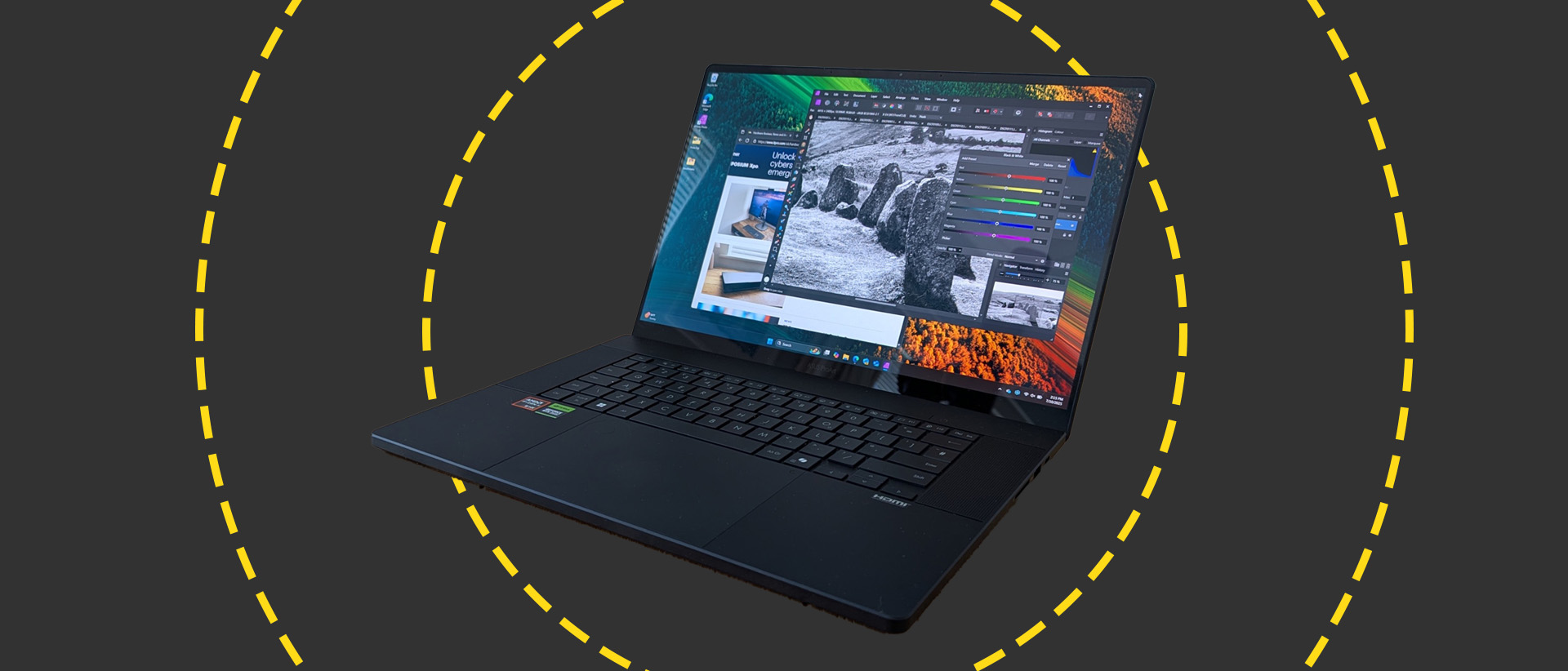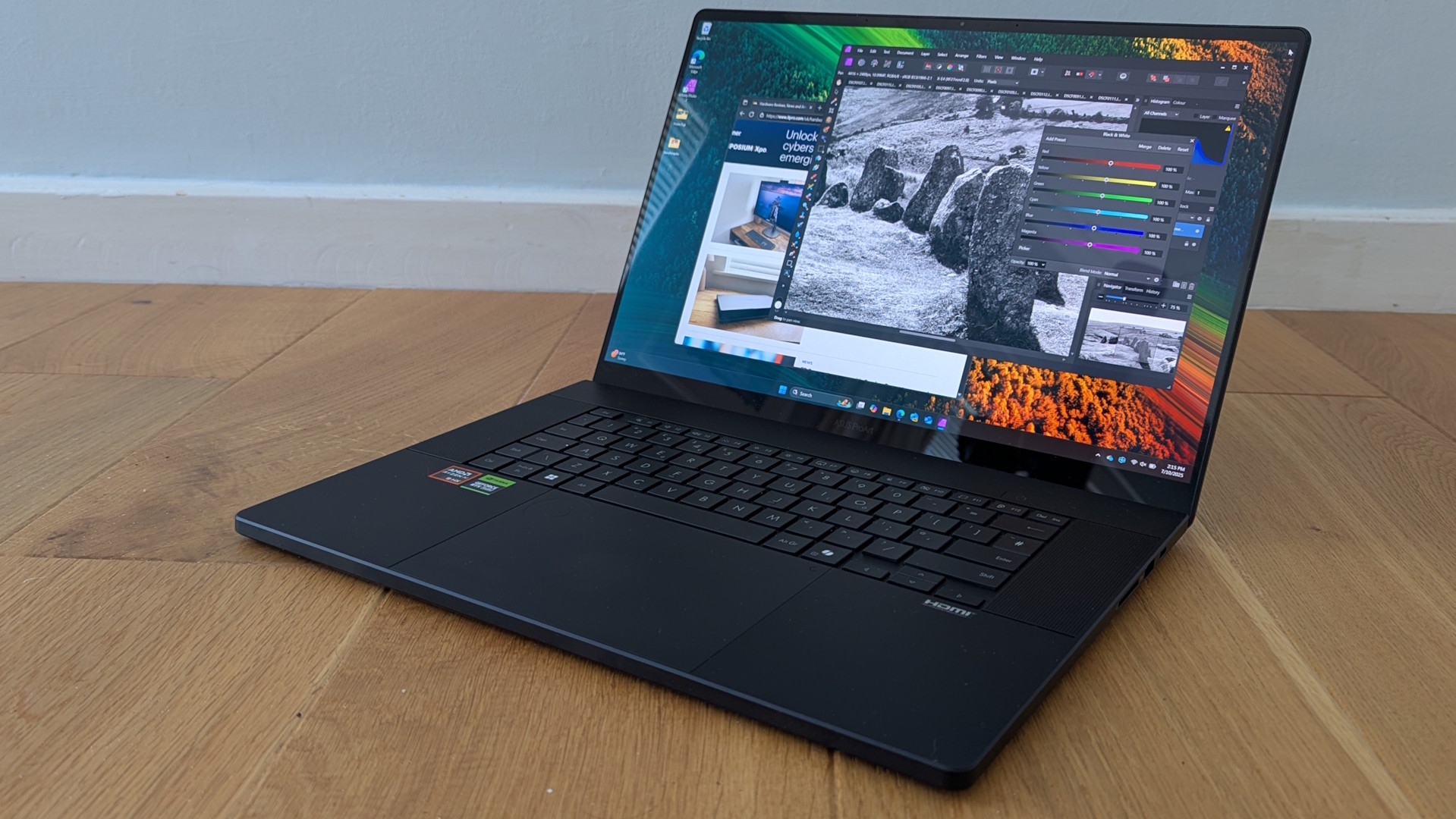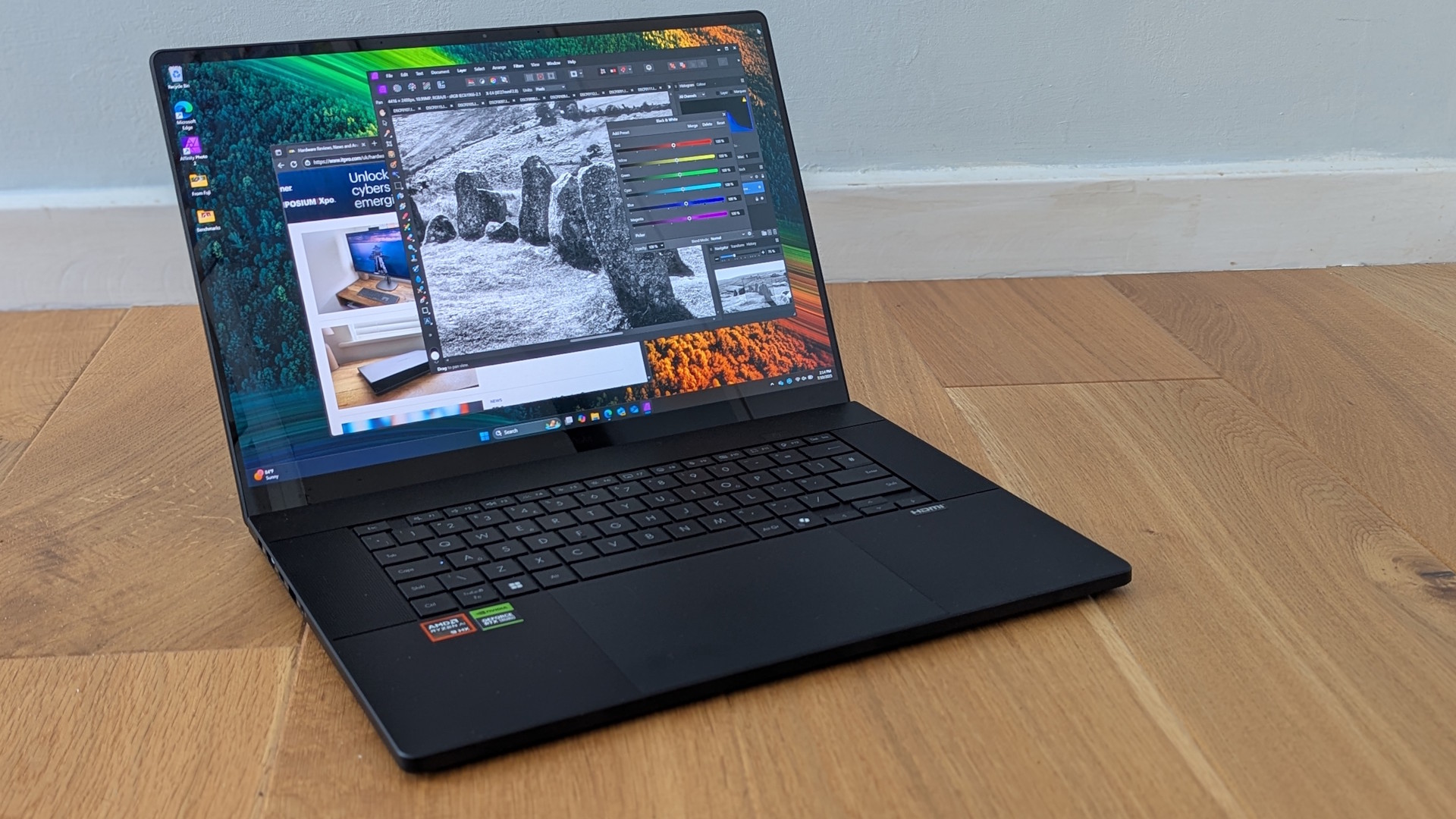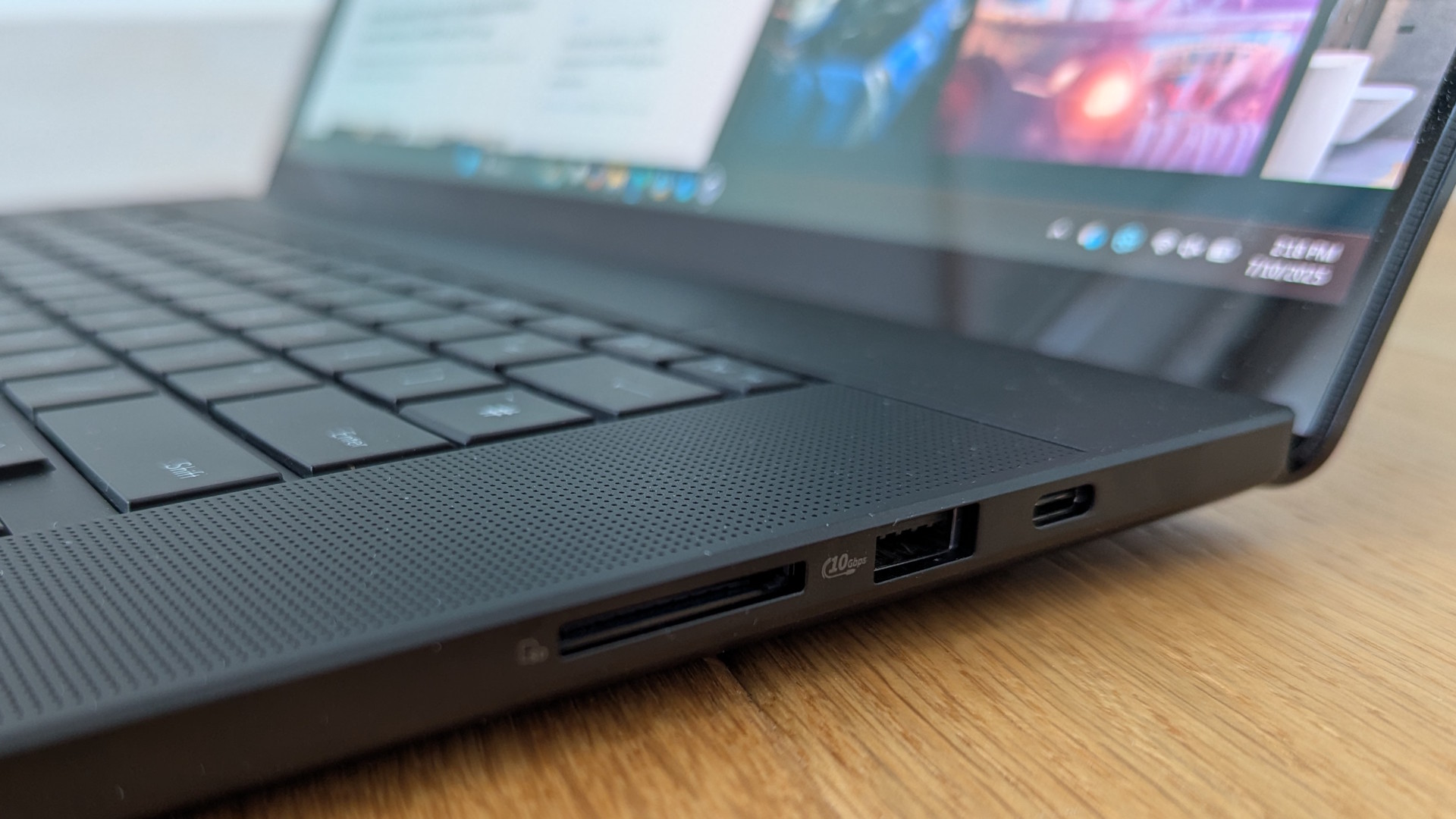The Asus ProArt P16 is a first-class laptop for creative pros
With high-performance specs, a slick design, and a spectacular screen, this is a superb Windows device for serious creative work

-
+
Impressive all-round performance
-
+
Sleek and robust design
-
+
Great connectivity
-
+
Fantastic OLED screen
-
-
Size and spec have an impact on battery life
-
-
It's not exactly cheap

Creator laptops have emerged over the last few years as a best of both worlds solution for creative professionals, giving you similar specs to gaming laptops in a design that won't look out of place in the office or studio – and frequently with a beautiful OLED screen. Asus's latest ProArt P16 is a particularly good example of the breed. It has the CPU and GPU horsepower to handle anything from 4K video editing to 3D design to software development and more. Sure, it can run Doom: The Dark Ages with the settings dialed up high, but it can also double as a graphics workstation or tackle complex financial models and simulations.
Provided you can handle a laptop with a little more weight than your average corporate effort, it provides a comfortable and effective platform for tackling pretty much anything you want. The only other sticking point might be convincing budget holders that it's something that you really need; it's not overpriced, but neither is it cheap.

Asus ProArt P16: Design
Some creator laptops still resemble dressed-down gaming laptops, the equivalent of a neon-glowing Alienware model wearing a black business suit. The ProArt P16, however, simply looks the part. Closed, it's a refined slab of matt black aluminium, coated in an anodized, grease and grime-resistant finish. Nicely rounded corners and a clever hinge almost hidden at the rear give it an extra touch of class, and while the 355 x 247mm desktop footprint is relatively large, it doesn't feel too bulky, thanks to a 17.3mm thickness and a 1.85Kg weight.
The ProArt P16 meets MIL-STD 810H military standards, and Asus's marketing makes some pretty big claims about sand and dust resistance, operation in up to 95% humidity, uninterrupted productivity at altitude and in low temperatures, and capabilities to withstand solar radiation, high temperatures, and shock. We've been using it in Devon during a heatwave, but that's about as rigorous as our testing of this stuff got. Still, if you're looking for a mobile studio tool, you can take comfort that the ProArt P16 should survive whatever hardships you and it encounter.
The chiclet keyboard looks a little undersized with all that space on the deck to fill, but Asus's decision not to add a numeric pad or a bunch of unnecessary function keys makes sense. You have everything you need, including a small but slightly separate cursor pad, and the large Enter, Tab, and Shift keys are easy to find even when you don't have the crisp backlighting turned on. The action is also very likeable, with 1.7mm of key travel, a light but smooth feel, and just enough spring and feedback to help you maintain a decent speed. It's great to work on.
What's more, the touchpad is a monster, measuring 15cm across and extending 10cm downwards from near the bottom of the space bar to a few millimetres from the edge. The tracking's good enough for fairly detailed design or image-editing work without a mouse, and there's even an integral DialPad for analogue control in applications that support it.
In terms of connectivity, the ProArt P16 is the best laptop of any kind we've looked at recently. It comes with its own 200W power supply with a proprietary connector, and while we'd usually complain about this, it gets the laptop charged fast and doesn't occupy either the USB 3.2 Gen 2 Type-C or USB 4.0 Type-C connector (though in a pinch you can use either one for charging at a slower rate). There's also an HDMI 2.1 output for hooking up to high refresh-rate 4K monitors and other displays, and an SD Express 7.0 card reader, perfect for taking shots direct from a high-end modern mirrorless camera or DSLR. Plus, while other laptops aimed at creative pros might have abandoned the old-school 3.5mm jack, the Asus still has one ready for plugging a set of studio-grade cans in.
Sign up today and you will receive a free copy of our Future Focus 2025 report - the leading guidance on AI, cybersecurity and other IT challenges as per 700+ senior executives
Asus ProArt P16: Display

So far so good, but what takes the ProArt P16 up another level is its gorgeous 16-inch OLED display. The model we tested – the H7606WP – has a 3K version with a 2880 x 1800 resolution, a 16:10 aspect ratio, and a 120Hz refresh rate. It's Pantone validated and can reach 400 nits of SDR brightness or 500 nits in HDR.
In actual use, it's stunning. Blacks are as deep and black as you might wish for, but it can also convey the full range of darker shades and near-black tones. Colors run the gamut from rich and highly saturated to natural and lifelike, depending on the material, and everything looks spectacularly smooth and clear.
Test results with a colorimeter prove this is a screen that can handle professional use. It covers 100% of both the SRGB and DCI-P3 color gamuts with a 164% SRGB volume and a 116% DCI-P3 volume. It also covers 93% of Adobe RGB, with a 100% gamut volume. We measured SDR brightness levels at 383.9nits and the average Delta E is 0.64, so color accuracy is nigh-on perfect.
I wouldn't describe the audio with the same level of superlatives, but it is extremely good by laptop standards. There's a depth and weight of tone here that you simply don't get with many laptops, plus an unusually wide and precise stereo spread.
In fact, the one area where the Asus doesn't excel is the camera. It captures decent 1080p video and copes reasonably well with tricky exposure situations, but it's noisy in low-light conditions, and I've seen crisper, cleaner video on other devices. It's fine. It just isn't great.
Asus ProArt P16: Performance
Our test ProArt P16 combines the 12-core Ryzen AI 9 HX 370 with 64GB of RAM and one of NVIDIA's latest RTX 50 series GPUs, in this case, the mid-range RTX 5070. Unsurprisingly, it's a powerhouse performer in just about any application, going toe-to-toe with the fastest machines we've tested.
Geekbench 6 certainly poses no challenges. The ProArt P16 scores 2925 in the single-threaded benchmark and 15192 in the multi-threaded tests, putting it comfortably ahead of HP's ZBook Power G11 workstation, with 2,397 and 11,906, and in the same ballpark as its sibling, the Asus ProArt X13, with 2750 and 15080. It's also one of the fastest machines we've ever tested in PC Mark 10, scoring 8191 in the Modern Office benchmark.
More demanding tests aren't a problem, either. The ProArt P16's scores of 117 (single-threaded) and 1156 (multi-threaded) in the Cinebench rendering tests are amongst the fastest we've seen, if not the fastest. Meanwhile, its real-time 3D performance is just spectacular, with a score of 11370 in 3D Mark's TimeSpy test and 2610 in the newer and more advanced Steel Nomad benchmark. Both scores put it fast ahead of any other device we've tested, including the ProArt X13. Where the ZBook Power G11 scores 88,543 in Geekbench 6's GPU test, the ProArt P16 scores 123,471.

And while the 8GB of graphics VRAM limits performance at 2K and 4K resolutions in some games, the Asus still runs Doom: The Dark Ages at 49 to 60fps at the panel's native resolution with detail settings set to high and DLSS in Performance mode. While not strictly speaking a selling point for corporate budget holders, it has to be said it looks awesome.
Creator laptops need a lot of storage, and Asus hasn't stinted, fitting a 2TB PCIe 4.0 SSD. It's not the fastest we've seen, with sequential read/write speeds of 5276MB/sec and 4823MB/sec, but it's still more than speedy enough to handle media-heavy apps.
With a screen this big and so much power on tap, you can't expect a battery that will last you through multiple working days, but the 90Wh battery in the ProArt P16 will get you through most of the average working day if you don't push it hard with creative applications. In our standard HD video playback test, it survived for ten hours and eight minutes with the brightness set to 170nits. Needless to say, at full brightness and with the CPU and GPU being stretched, you might still want to keep your charger handy. Luckily, the 200W unit supplied will get you back up to 50% in just under half an hour.
Asus ProArt P16: Is it worth it?
Now we come to the only serious reason not to buy the ProArt P16. With prices starting at £2399 inc VAT and this model costing around £2799 inc VAT, there's a good chance that you can't afford it. If you have a serious business case and the budget, however, then it's actually great value. The nearest thing to an equivalent MacBook Pro would cost you in the region of £2899 with a 512GB SSD, 48GB of RAM, and no discrete graphics card. Move up to the model with the 16-core M4 Max CPU, 40-core GPU, and 1TB of storage, and you're looking at an outlay of £3999.
Similar creator PCs offer more cost-conscious competition, but we're struggling to think of any that have the same all-round polish as the ProArt P16, or such an excellent screen. If you're looking for a high-end Windows device for mobile creatives, it's hard to do better than this.
Asus ProArt P16 specifications
Display | 16-inch 2,880 x 1,800 OLED, 120Hz refresh rate | Row 0 - Cell 2 | Row 0 - Cell 3 |
Processor | AMD Ryzen AI 9 HX 370, 12 cores, 24 threads, up to 5.1GHz | Row 1 - Cell 2 | Row 1 - Cell 3 |
GPU | NVIDIA RTX 5070 8GB | Row 2 - Cell 2 | Row 2 - Cell 3 |
RAM | 64GB LPDDR5X | Row 3 - Cell 2 | Row 3 - Cell 3 |
Ports | 1x USB 4.0 Type-C, 1x USB 3.2 Gen 2 Type-C, 2x USB 3.2 Gen 2 Type-A, HDMI 2.1, SD Express 7.0 card reader | Row 4 - Cell 2 | Row 4 - Cell 3 |
Storage | 2TB PCIe4 SSD | Row 5 - Cell 2 | Row 5 - Cell 3 |
Connectivity | Wi-Fi 7, Bluetooth v5.4 | Row 6 - Cell 2 | Row 6 - Cell 3 |
Weight | 1.85Kg | Row 7 - Cell 2 | Row 7 - Cell 3 |
Dimensions | 354.9 x 246.9 x 17.3mm | Row 8 - Cell 2 | Row 8 - Cell 3 |
Battery Capacity | 90Wh | Row 9 - Cell 2 | Row 9 - Cell 3 |
Operating System | Windows 11 Home | Row 10 - Cell 2 | Row 10 - Cell 3 |
Stuart has been writing about technology for over 25 years, focusing on PC hardware, enterprise technology, education tech, cloud services and video games. Along the way he’s worked extensively with Windows, MacOS, Linux, Android and Chrome OS devices, and tested everything from laptops to laser printers, graphics cards to gaming headsets.
He’s then written about all this stuff – and more – for outlets, including PC Pro, IT Pro, Expert Reviews and The Sunday Times. He’s also written and edited books on Windows, video games and Scratch programming for younger coders. When he’s not fiddling with tech or playing games, you’ll find him working in the garden, walking, reading or watching films.
You can follow Stuart on Twitter at @SATAndrews.
-
 ‘1 engineer, 1 month, 1 million lines of code’: Microsoft wants to replace C and C++ code with Rust by 2030 – but a senior engineer insists the company has no plans on using AI to rewrite Windows source code
‘1 engineer, 1 month, 1 million lines of code’: Microsoft wants to replace C and C++ code with Rust by 2030 – but a senior engineer insists the company has no plans on using AI to rewrite Windows source codeNews Windows won’t be rewritten in Rust using AI, according to a senior Microsoft engineer, but the company still has bold plans for embracing the popular programming language
By Ross Kelly Published
-
 Google drops $4.75bn on data center and energy firm Intersect
Google drops $4.75bn on data center and energy firm IntersectNews The investment marks the latest move from Google to boost its infrastructure sustainability credentials
By Nicole Kobie Published
-
 OpenAI says prompt injection attacks are a serious threat for AI browsers – and it’s a problem that’s ‘unlikely to ever be fully solved'
OpenAI says prompt injection attacks are a serious threat for AI browsers – and it’s a problem that’s ‘unlikely to ever be fully solved'News OpenAI details efforts to protect ChatGPT Atlas against prompt injection attacks
By Nicole Kobie Published
